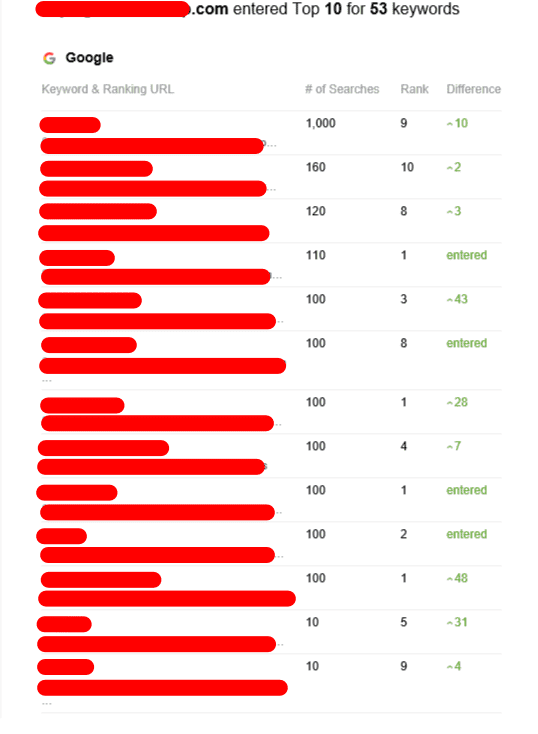Tiered Link Building - How to Avoid a Google Penalty
Tiered link building can be an effective tool that can aid websites in improving their ranking on search engines. It must be used correctly. It could result in an Google penalty if not done correctly.
Tiered link construction involves the use of multiple levels of backlinks in order to improve the ranking of a website. This method is employed by many SEO experts and link building agencies.

First-tier links
Tiered link building is a potent SEO strategy that will help increase your search engine ranking. However, it's important that you know how to use tiered links effectively to avoid penalties from Google. This can be achieved by using different levels within your backlink pyramid. It is also possible to employ other SEO techniques, like niche editing and broken link building.
In a tiered strategy the first tier should consist of links from sites with high-quality with higher PageRank as well as domain authority than your own. This will give you a better chance of ranking over the long term. Linking to low-quality sites can harm your rankings and raise red flags for Google. Avoid linking to sites that do not have any connection or only contain links.
Another way to get your first tier is using wikis and forum comments filled with user-generated content. This is a great way to get high-quality, contextual and relevant links. You should be aware of the fact that these links might not have as much link juice.
You can also make use of a resource like HARO to get an overview of the topics reporters are seeking information on. This is an excellent way to create your first layer of links in a natural manner without breaking any rules. Be sure to only link to trustworthy websites that are related to your industry.
Second-tier links
Tiered link building is a method employed by site owners and SEO agencies to improve search rankings on engines. However, it's a risky method that could lead to Google penalties. Tiered links are backlinks that direct users to third-party websites that confer your website authority. These backlinks serve to transfer link equity to your primary website pages, which can then get higher rankings in SERPs. However, this strategy is time-consuming and costly. It can also be difficult to get to the tipping point in search results on engines.
Tier 2 links are likely to be less valuable than the first one, but can still help boost organic ranking and help build domain authority. They also make Tier 1 links more effective by increasing their value. Tier 2 backlinks can be dofollow or nofollow, however dofollow is the preferred choice.
There are many ways to generate Tier 2 backlinks, such as guest posts and citations in niche-specific articles. You can also build these links through link roundups or directories for articles. No matter which method you choose, it is essential to ensure that the URLs referred to are relevant to your context. In addition, you should avoid using low-quality links, that could be considered spam by Google. This is due to the fact that such strategies can quickly become a black hat strategy, which could be penalized by Google.
Third-tier links
Link building in an tier system is an effective SEO tool that can help get websites to rank higher on results pages of search engines. However, it could also be dangerous if done improperly. If Google detects that you're using tiered links it could penalize your site or even remove it from the search engine altogether. There are tier link building in seo to avoid this fate.
In the third tier, things get more complicated. Here, marketers use third-party tools to create backlinks on a large scale. These include blog posts directories that are not of high quality and bookmark websites, wikis, and other user-generated content. The purpose of these backlinks is to boost the authority and PageRank of your first-tier links.
These links can be traced back to the original source, making them more risky than their natural counterparts. In addition, they're less effective at boosting PageRank. Google's algorithm is becoming more sophisticated and low-quality sites are losing their value (even even if they're nofollow).
Marketers should be careful when creating links for third-party services to avoid issues. They should only choose third-party companies with a solid track record. They should also avoid any automation tools, as they can cause problems. If Google notices automation, it may issue a manual penalty which could drastically lower your rank. This is the reason it's recommended to work with an SEO agency with experience with tiered link development.
Fourth-tier links
Tiered link building involves creating a pyramid. This technique permits websites with higher authority that are more authoritative, to pass on link juice to pages with lower authority that can then rank for certain keywords. This technique can improve website traffic and rankings with time. It is essential to remember that using tiered links across your entire website or even a single page is risky.
The most important factor to avoid this is to ensure that your tier-2 links come from multiple sources. Google may penalize your website when your tier-2 backlinks are all from the same source. Avoid linking to sites that are spammy since they can damage your site's reputation.
In addition to guest blogging Tier 2 links can be obtained through paid advertising or by sending quality content to high-authority websites. Another option is to submit your article to HARO (Help a Reporter Out). This service sends emails to journalists on a variety of topics. You can provide the information they require for their articles.
However, this method of link building is not a long-term plan. Google's algorithm is constantly updated which makes it more difficult to create links from low-quality sources. Additionally the search engines are more adept at detecting automation. This means it is likely that tiered link building will eventually cease.
